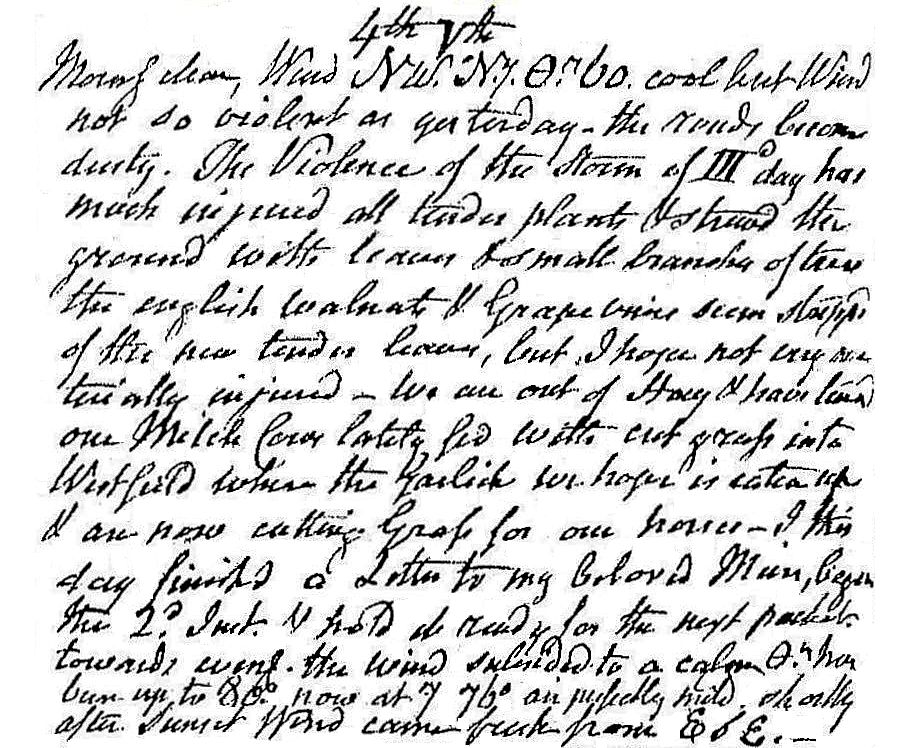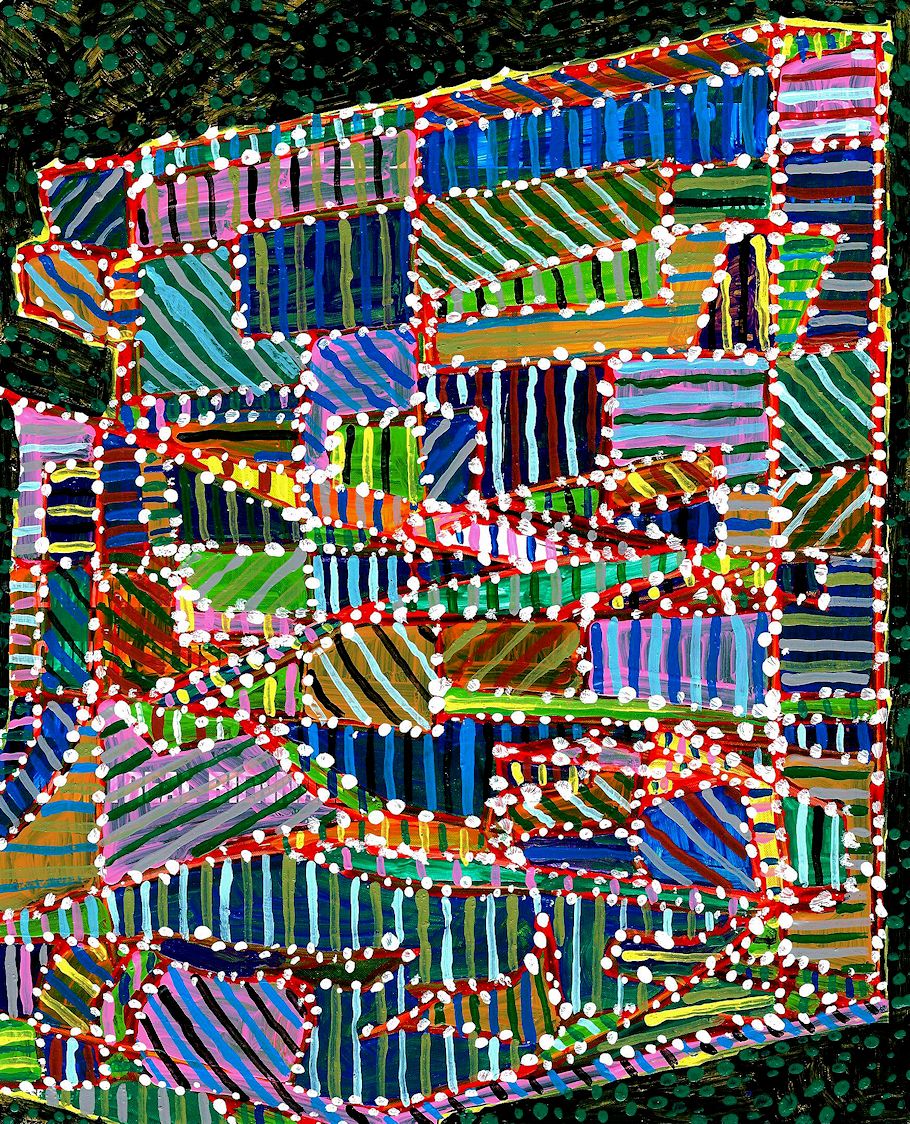4 June 1778 Thursday
. . . . . .
32 y.o. Francesco Piranesi 1 August 1790
Raccolta de'Tempj antichi, Vol. II.

Lateral part of the Pantheon with the remains of the Baths of Agrippa leaning against it.
AA Doors which by means of the overhang of the base (B) communicated in the semicircular spaces obtained in the thickness of the walls, and described in plates III and IV. C Door which communicates with the stairs that ascend to the upper parts of the Temple through the overhang of the pedestal (D) E Door which from the aforementioned stairs communicates above the roof of the pronaos. F Door that communicates from the aforementioned stairs above the cornice (G) and through the doors (H) in the corresponding compartments above the internal grandstands shown in plan in Table IV. These rooms served as many warehouses for the convenience of keeping tools for the use of reimbursing the building. H Remains from the Baths of Agrippa described in the following table.
4 June 1812 Thursday

Morning clear, wind NW Nerly, temperature 60. Cool but wind not so violent as yesterday, the roads become dusty. The violence of the storm Tuesday has much injured all tender plants and shrewd the ground with leaves and small branches of trees. The English walnut and the grapevines seem stripped of the new tender leaves, but I hope not ........ly injured. We are out of hay and have ..... our milk cows lately fed with cut grass into west field where the garlic we hope is eaten up and are now cutting grass for our horses. I this day finished a letter to my beloved Miers, began the 2nd .... and hold it ready for the next packet. Toward evening the wind subsided to a calm. Temperature has been up to 80°, now at 7 76°. Air perfectly mild. Shortly after sunset wind came back from ESE.
4 June 1813
Marriage of Miers Fisher Jr. and Hélène Gregoroffsky at St. Petersburg.
Sunday 19 [September 1813]... "At dinner I set by the side of Mrs. F[isher]. the widow of young Mr. F[isher]. late son of M[iers] F[isher] of Philada.* Her misfortunes are early and singular. She is by birth a Russian, and a native of Moscow. Her Parents died when she was very young leaving an orphan destitute of property. Mrs. Krehmer became her patroness and she was brought up in her family. She is well educated and sensible, and speaks the Russian, German, French and English languages fluently. She is apparently twenty three or four. She was addressed by Young F[isher] to whom she gave her hand. They were married in the spring of the present year. He was two or three years older than his bride. On the day after they espousals she removed to his house. On the morning following poor F. on descending a stone stair case from the chamber of his wife, he fell, and before he was discovered had breathed his last. His fall had not been heard and he had remained a corpse an hour before he was found, casually by one of the servants. What a scene of agony and horror for the widow Bride. How short the dream of fancied happiness. But one day had she worn the nuptial garment when she was doomed to cover herself with the sable weeds of the widow. She expressed a strong inclination to visit the friends of her late husband in America. I told her they were Quakers and that their manners and mode of life would not please her. She replied, that she was sure, that they were amiable and that was enough.
*Miers Fisher, son of Miers Fisher of Philadelphia, a member of the assembly, first councellor for the Society for the Abolition of Slavery, and a director of the Bank of North America and the Insurance Company of Pennsylvania, and Sarah Redwood of Newport. The father was a Quaker, as indeed were the family in general, and was among those deported to Winchester, Va. by Congress in 1777 (Gilpin, "Exiles in Virginia", passim). The son, Miers Fisher (1786-1813), in his twenty-first year [1807] sailed to Cadiz, and on the return voyage to Havana he was seized with yellow fever. In April, 1809, he sailed as supercargo to Russia. The vessel was captured by a Danish privateer, and reached Cronstadt just before the closing of the Neva River. He remained in St. Petersburg, where he established a mercantile house. He married, June, 4, 1813, Helen Gregoroffsky, niece of Gen. Alexander Focke, who had been educated in England. "Their marriage was allowed to take place by the gracious condescension of the Emperor Alexander without his being subject to the various regulations of the Greek Church. You cannot conceive the sensation in this town among all ranks. He was taken off 30 hours after his marriage by a fit of apoplexy" [from a letter of John Venning to Bainbridge and Brown of London]. His widow died in Cincinnati, Ohio, April 9, 1828. I am indebted to Mr. John W. Jordan for the information.
Elizabeth Donnan, editor, Papers of James A. Bayard, 1796-1815 (Washington D.C.: American Historical Association, 1913). p. 461.
4 June 2007
Archinect @ Postopolis!
Not so much outside, rather, more beyond inside. Very much in the territory, but not within the normal restraints of the territory.
Archinect @ Postopolis!
metamechanic, I'm wasn't trying to evoke Derrida or Deleuze with "beyond inside", rather trying to relate my own behavior (as sometime critic) within the realm of architecture. Allow me to reference my own experience to explain where at least my de-territorialized behavior comes from.
Looking back, it started with learning and working with CAD in 1983, not within academia, but within a professional office (the first to introduce CAD in Philadelphia). I had a typical architecture background, but no computer background, then a week and a half crash course in Huntsville, AL, then big INTERGRAPH system arrives, and then told to make it all happen. Now I was very much in the territory of architecture, but, because of whole newness of CAD within architecture, a window to beyond the inside had opened up. Within two years I found myself employed by the Dean's Office of the Graduate School of Fine Arts at the University of Pennsylvania. I have no Graduate degree, but they were paying me to be there. I ran a CAD consulting business for the GSFA (where the computer labs are now on the third floor of Meyerson Hall) to help offset the cost of their INTERGRAPH system. Again, very much right in the territory, but also a lot beyond it. Within three years of that I had my own CAD system and my own CAD consulting business--great while it lasted. Then the recession of 1990. Then an insular creative period where I used the CAD system in my basement to explore "un-built" architecture by constructing 3D CAD models of architectural designs that were never executed, and accumulated a sizable collection of models. That's when I really went beyond inside, exploring all this architecture that didn't even exist. And then in 1996 the Internet and the virtual...
4 June 2017

zero four six
4 June 2023 Sunday
Yesterday's post delivered Log 57: Black is . . . an' Black ain't . . ., the introduction of a Black pedagogy for architecture.
Inside Cynthia Davidson writes:
In the fall of 2021, I met Darell Wayne Fields, a designer, educator, and visiting Presidential Scholar at the Princeton University School of Architecture. After the Murder of George Floyd in 2020 and the Black Lives Matters protests that followed, I was interested in Field's thinking about the state of Blackness in architecture. Author of Architecture in Black: Theory, Space and Appearance (2015 [revised edition]), an analysis of theoretical relationships between architecture and Blackness..
To: architecthetics@xxxxxxxx.ac.uk
Subject: Puff Daddy Wagner
Date: Mon, 23 Oct 2000 11:32:38 -0400
Rick wrote:
I believe that Steve grew up in that torrid cold war version of a Wagnerian climate, and I wonder how much of those cultural qualities he attributes to the hangover effect of 19thC Wagnerianism--if indeed, any?
Steve replies:
This is perhaps a perfect example that people have a very high proclivity to believe what they want to believe. I was born 20 March 1956 in Philadelphia, and since 1958 I've been living in the same house in the Olney section of Philadelphia. If Rick had explained what he means exactly by a "torrid cold war version of a Wagnerian climate" I could then let you all know how my "growing up" compares or doesn't compare. As it stands, I'm only able to comment on what Rick believes about me, and believe me when I say that Rick has gone well beyond the measure of acceptable supposition as to my life and background.
Rick, wouldn't it be (a) better (form of teaching) if you spoke directly about your own experiences of life and learning rather than project what you "believe" about the lives of others?
On a lighter 'note', I don't much care for Wagner; actually never listen to any of his stuff. On Saturday, I purchased the new Everything But The Girl, the latest Sting, and a CD copy of T. Rex's The Slider (1972), which was an album owned by my older brother and one that I remember listening to a lot during my first year of architecture school in 1975-76. In September, I purchased (and have since listened to often) Deep Dish Yoshiesque (nominated compilation of the year)--it's (not opera) house music. [www.deepdish.com]
And, on a 'darker' note, before I bought the CDs on Saturday at Borders Bryn Mawr, I first selected to purchase Harvard Design Magazine Fall 2000, where the back GSD Notes features Faculty Books: Architecture In Black by Darell Wayne Fields--and excerpt from "A Black Manifesto" - Architectural History is White. Architectural Theory is White. And architectural practice, no matter what color the "owners" and "workers," is White. [and there are over a half dozen more paragraphs provided.]
If I ever really did grow up in some sort of cold war Wagnerian world, it certainly isn't Wagnerian now. Since I still live in the house I grew up in I've thus witnessed a neighborhood that has 'changed'. Most of my immediate neighbors are Haitian, and its fun to occasionally hear 'patois' spoken out back in the driveway while I'm in my kitchen eating. My next door neighbors are Nigerian, and the grandmother of the household has turned their front lawn on to a large garden patch growing a type of native African lettuce. The lettuce grows very high, so, even though our lawns are by no means large (about the size of a large living room), I do not always see the grandmother in her garden while she picks the lettuce. When I look out my bedroom window from the second floor, however, I can see her, and the sight is simply remarkable--there she is, bent over, wearing boldly printed Nigerian grab with her head also in a nice wrap, and I really cherish that little glimpse of Africa. Across the street live a family of Asian Indians, and the grandmother over there each summer constructs a very 'primitive' looking rope and branch arbor upon which some vegetable grows. This past summer's arbor (btw, we live on Arbor Street) was particularly elaborate--it actually looked exactly like Laugier's 'Primitive Hut'! Anyway, I saw them taking down the arbor around noon on Saturday.
Wagner is probably too White for my taste. I don't play music in my house loudly, but when I play Sade, I do turn the music up a notch.
To: xxxxxxxx@gsd.harvard.edu
Subject: to: Darell Wayne Fields
Date: Mon, 23 Oct 2000 17:53:52 -0400
Dear Mr. Fields,
I've just become aware of Architecture In Black this past weekend when I purchased the recent Harvard Design Magazine. I'm writing to you because I am a white architect (www.quondam.com) and have of late been chided (within the design-l email list) for some of my views about White (architectural) thinking. I've gone so far as to state that "the Whiter humanity thinks, the more it manifests extinctions." I have not yet read (or purchased) your book, but I certainly intend to do so. I've only read the excerpt in HDM, and I found it interesting how "A Black Manifesto" ends there, i.e., the 'catch-22' of a Black speaking from within the 'regime'.
I've been living in the same house in Philadelphia since 1958, all but the first two years of my life. My neighborhood has 'changed' significantly over the last 10 years--now well over 50% Black (my immediate neighbors are Haitian and next door are Nigerians) with the rest of the block made up of immigrants from various continents, plus very few white 'oldies' like myself. I am now very much a lone white man living in a Black neighborhood, and whenever I read about 'new urbanism' I just have to laugh -- all the perfect neighborhoods that White America is searching for actually do exist, however, they also happen to be Black neighborhoods. I don't know if you say anything about Hall's The Hidden Dimension, but I have on occasion pointed out that no where does that book mention White America's very real restrictions on Black America's space.
If you ever what to discuss Whiteness vis-a-vis Blackness in architecture, please feel free to contact me via email or by phone (215.xxx.yyyy).
Sincerely yours,
Stephen Lauf
ps
www.quondam.com used to label itself a virtual museum of architecture, but is now in transition, making it a virtual place in architectural history. I'm planning to fill quondam with new content over the next few months.
To: anand.bhatt@xxxx.com
Subject: hello
Date: Thu, 26 Oct 2000 19:07:30 -0400
hi Anand,
Just writing to say hello. Quondam/Pieces is still only a virtual enterprise, and one that I'm sure will transform (if not disappear) again soon. I've been organizing all my emails since July 1998, and I'm finding therein much inspiration and content for yet again a 'new' quondam. I might start reading/learning java. Theories at quondam will focus on the relationship between chronosomatics and architecture, plus a little more investigation into 'constructing' virtual places in architectural history.
Do you think www.quondam.com would become an extremely popular site if it began to just give all its CAD databases away for free? If that happens, do you think quondam will ever get proper credit for the data once it's out there?
Just visited your site--my name is spelled Stephen, not Stephan.
Hope all is going well with you.
Steve
ps
Darell Wayne Fields (teaches at Harvard) just published Architecture In Black (March 2000), and therein he makes no bones about there being such a thing as 'Whiteness'. I've yet to read the book, but will soon be getting it from Temple U. library. I've emailed Fields and he's interested in my ideas regarding White thinking. I wonder if the book is available in India.
Guess what? I have a feeling The Discovery of Piranesi's Final Project is . . . an' The Discovery of Piranesi's Final Project ain't . . .
|